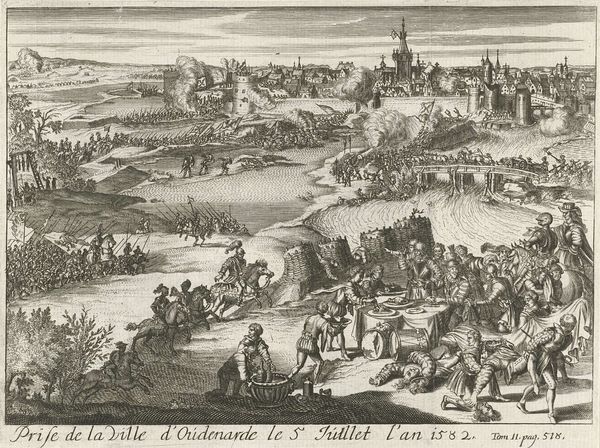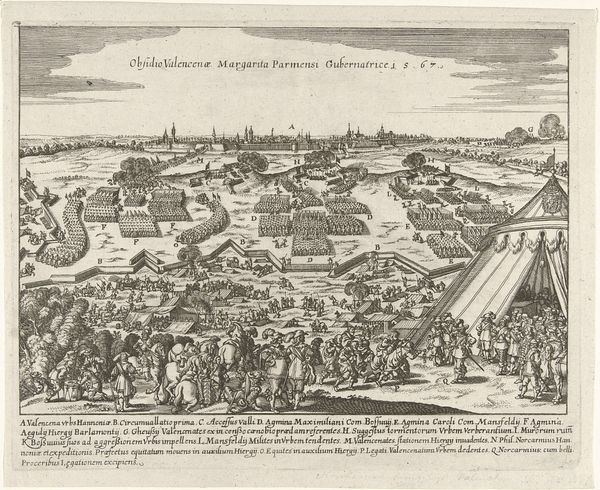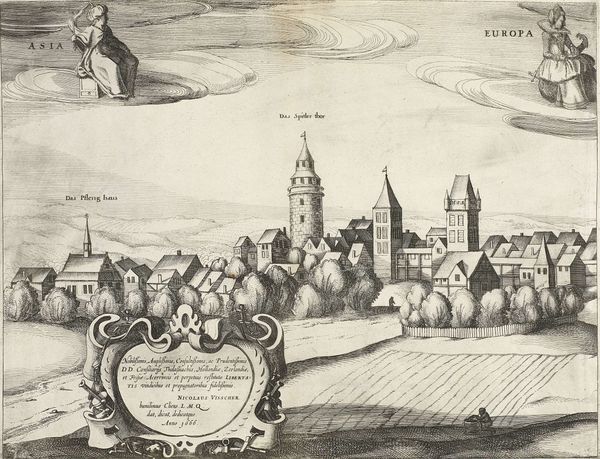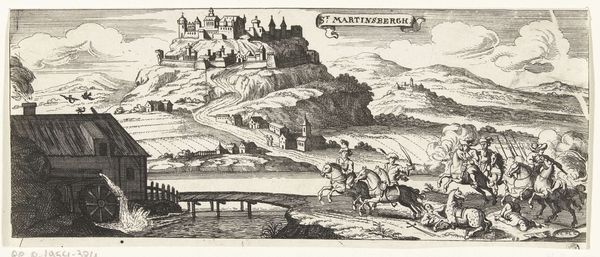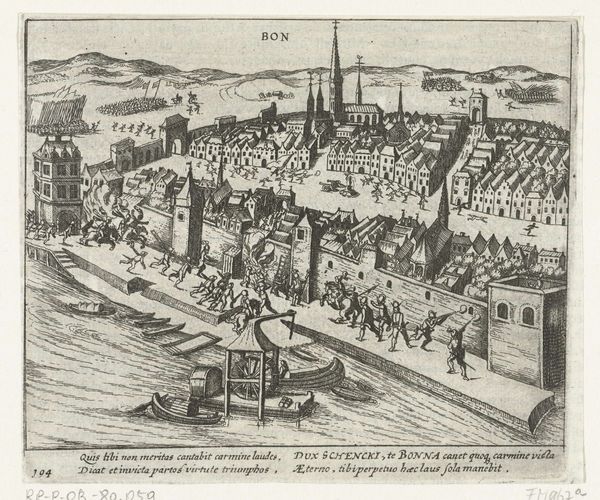
Announcement of the Lottery for a New Old Men's and Women's Home in Egmond-aan-Zee, 1615 1615
0:00
0:00
print, engraving
#
dutch-golden-age
# print
#
landscape
#
line
#
cityscape
#
history-painting
#
engraving
Dimensions: height 327 mm, width 579 mm
Copyright: Rijks Museum: Open Domain
Claes Jansz. Visscher made this print in 1615 to announce a lottery for a new old men's and women's home in Egmond-aan-Zee. Its fine lines were achieved by cutting into a copper plate with a tool called a burin. The image is not just a picture, but a product of skilled labor. Consider how the proliferation of prints like this one reflects a shift in the art world. No longer were images unique paintings, tapestries, or sculptures destined for the elite. Instead, they were items of mass communication. The choice of copper as a medium is significant, too. Copper engraving allowed for detailed and reproducible images that could be disseminated widely. This speaks to a growing culture of information and exchange. The print also prompts us to reflect on the role of art in society. It was not merely decorative, but served a practical purpose. Visscher shows us how art could be intertwined with social welfare and civic life.
Comments
No comments
Be the first to comment and join the conversation on the ultimate creative platform.

